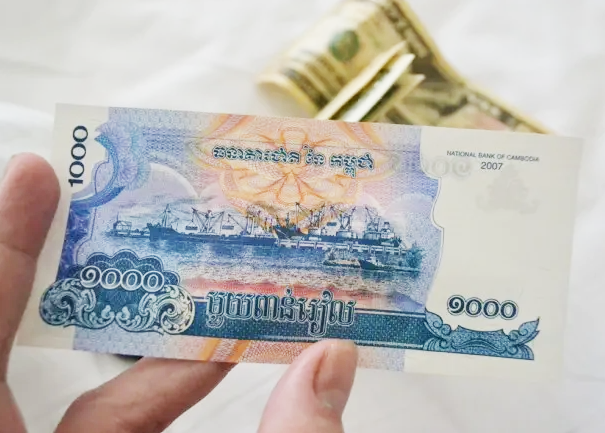
Food
To give you an idea of how much food costs in Cambodia, let’s assume that you eat 400 grams or 1 lb of rice each day. That’s 12 kg or 27 lb of rice per month, which costs you about $10 USD. This means you will have $290 USD left for other groceries, or almost $10 USD per day! Of course, this depends on your dietary preferences and whether you are willing to cook at home as well.
There are many restaurants in Cambodia, especially in big cities like Phnom Penh and Siem Reap. You can find a variety of cuisines here, from Western to Indian to fine dining. Cambodia has something for everyone’s taste buds. However, it goes without saying that eating out will cost more than cooking your own food. If you are planning to retire in Cambodia, you will need to shop for groceries regularly, either from the local markets or supermarkets.Transportation
You might be surprised to learn that people in Cambodia can survive on as little as $5 USD per day per person. However, this is only possible if you are a factory worker who has no other option but to live frugally. If you want to enjoy your travel or retirement in Cambodia, we suggest budgeting at least $300 USD per month.
As a local, obviously living in the city is the better way to go because our job is within the city. However, it does not cost much to travel in Cambodia. A bus from the capital to provinces with famous landmarks usually costs between 8usd to 13usd. Expect to spend some time chilling on the buses. There are sleeper buses available due to the fact that Cambodia has the infrastructure worthy of a developing country.
When travelling inside the cities, there are ride hailing apps available. The Uber of Cambodia is called “Grab”. However, it’s not the only one available.
-
Grab is known for its high price but quality rides.
-
TADA is known for its cheap price but you will have to acknowledge that some of their drivers “get distracted” easy.
-
PassApp is known for its convenience for the technologically illiterate as it does not require passengers to mark their destination on the map.
Expats and retirees usually buy their own vehicles here. You are not required a license to ride a bike with 125cc or less. However, you will have to apply for permit and Cambodian driving license if you want to own (and drive) a motorbike with 125cc or above as well as a car. You can apply for one at the driving license center at Aeon Mall Sen Sok. All you need with you are :
-
Your driving license in your home country
-
Your passport (with your visas)
-
Your passport photos
-
Some cash for the fee (30,000KHR as of posting this article)
How Much Do Utilities Cost in Cambodia?
<p style="caret-color: rgb(0, 0, 0); padding: 0px; margin: 12px 0px 0px; user-select: text; word-break: break-word; line-height: var(--cib-type-body2-line-height); font-variation-settings: var(--cib-type-body2-font-variation-settings);" segoe="" ui",="" "helvetica="" neue",="" helvetica,="" "microsoft="" yahei",="" "meiryo="" meiryo,="" "arial="" unicode="" ms",="" sans-serif;="" background-color:="" rgba(255,="" 255,="" 0.7);"="" class="">One of the advantages of living in Cambodia is that you do not have to pay any pipeline fee, unlike in the USA and European countries. The only utility bills you have to worry about are:<ul style="caret-color: rgb(0, 0, 0); margin: 12px 0px 0px; display: flex; flex-direction: column; gap: 10px; padding-inline-start: 24px;" segoe="" ui",="" "helvetica="" neue",="" helvetica,="" "microsoft="" yahei",="" "meiryo="" meiryo,="" "arial="" unicode="" ms",="" sans-serif;="" font-size:="" 16px;="" background-color:="" rgba(255,="" 255,="" 0.7);"="">-
Electricity: Electricity is relatively expensive in Cambodia, compared to other countries in the region. Each kilowatt hour (kWh) of electricity costs 720 KHR or $0.18 USD. The average household consumes about 30 USD worth of electricity per month. However, you can lower your electricity bill by using renewable energy sources, such as solar panels or wind turbines. There are many affordable and reliable options available in the market.
-
Water: Phnom Penh has a good water supply system, thanks to its location near the Mekong River. The Phnom Penh Water Supply Authority (PPWSA) is the main provider of piped water in the capital city. The PPWSA charges different rates for different types of customers, such as domestic, commercial, industrial, public service, and social. The rates are based on the volume of water consumed per month and are adjusted annually according to inflation and exchange rates. The PPWSA also offers subsidies for low-income households and free connections for poor families. In general, tap water costs 750 KHR or $0.18 USD per cubic meter, which is very cheap compared to other countries.
-
Garbage: Garbage collection fees vary by region and by type of housing. Different companies are responsible for different areas. For example, if you live in a flat on the third floor, you will pay less than if you live in a villa on the ground floor. Sometimes, garbage fees can be set by the developer of a gated community as well. It may sound complicated, but you do not have to pay more than $11 USD per month for garbage collection, unless you are a hospital or a private clinic. In that case, you will have to pay extra fees for medical waste management.
-
Internet: Internet fees depend on where you live and what speed you prefer. Cambodia’s internet is not very fast or stable, compared to other countries in the region. A 1 Mbps (megabit per second) connection costs around $18 USD per month on average. There are many internet service providers to choose from, such as Ezecom, Online, Digi, and Telnet. We will link some of them below for your convenience.
https://movetocambodia.com/<span style="" arial="" black";="" color:="" rgb(17,="" 85,="" 204);="" background-color:="" transparent;="" font-variant-alternates:="" normal;="" font-variant-numeric:="" font-variant-east-asian:="" text-decoration-line:="" underline;="" text-decoration-skip-ink:="" none;="" vertical-align:="" baseline;"="">
https://movetoasia.com/en/cambodia/cost-living/
